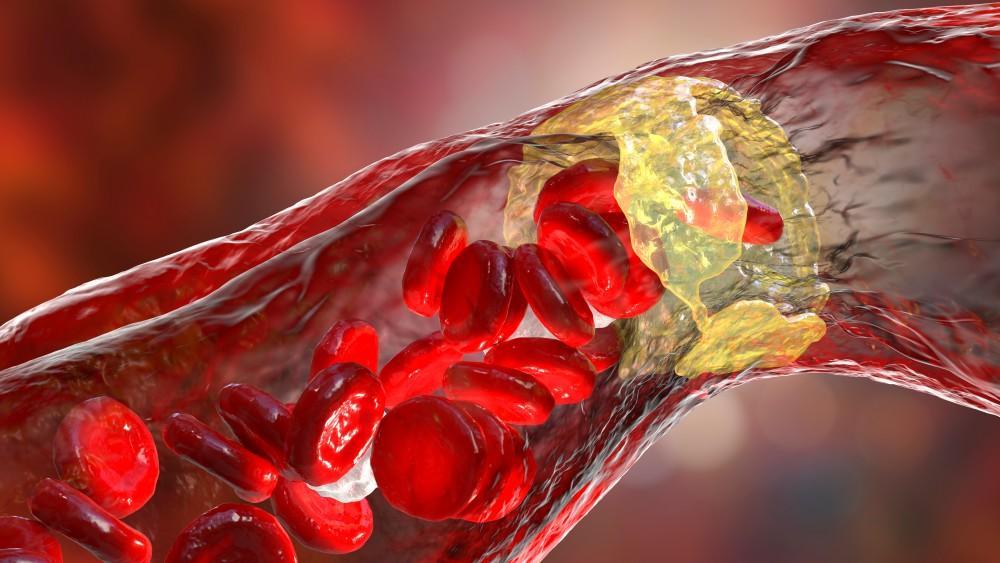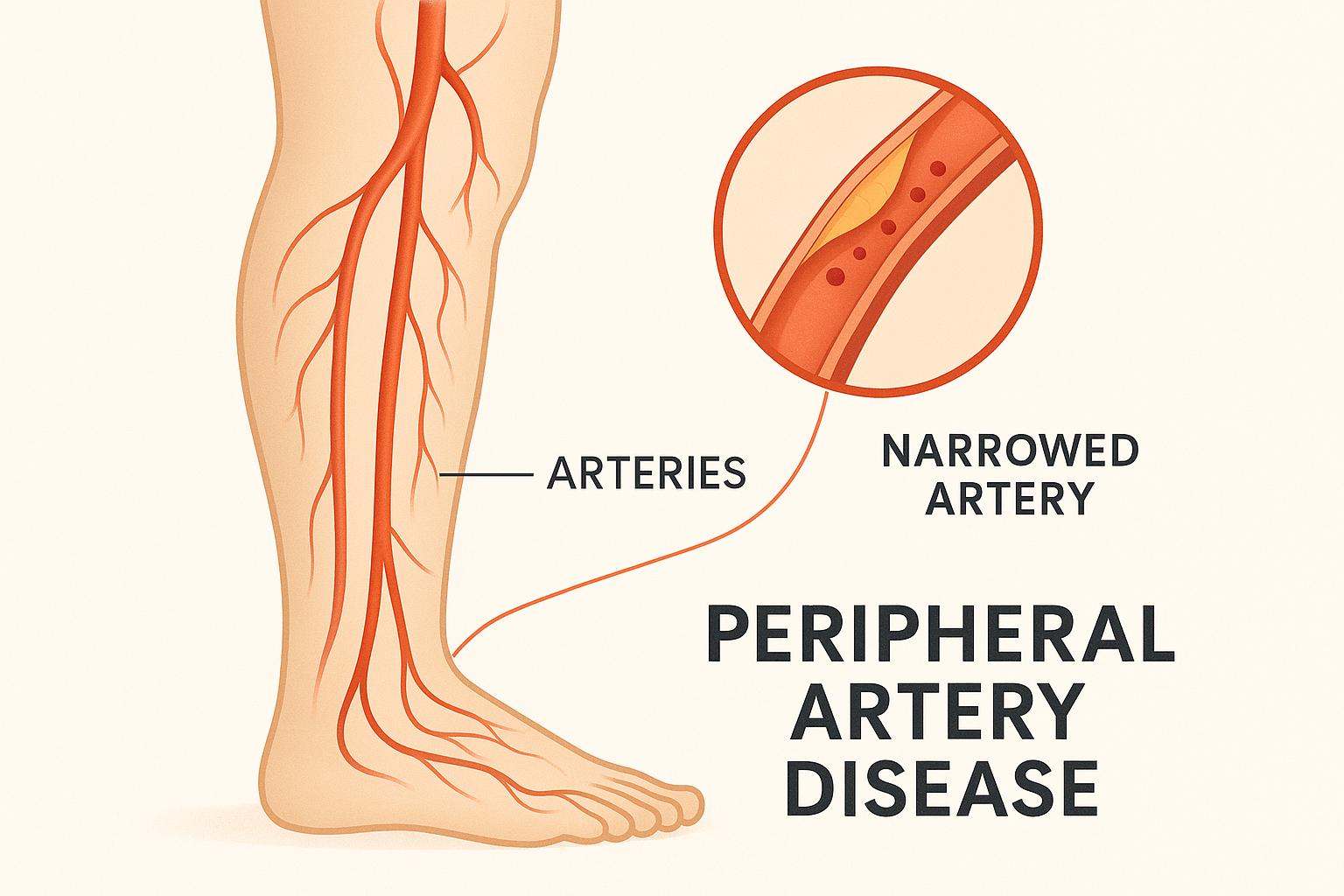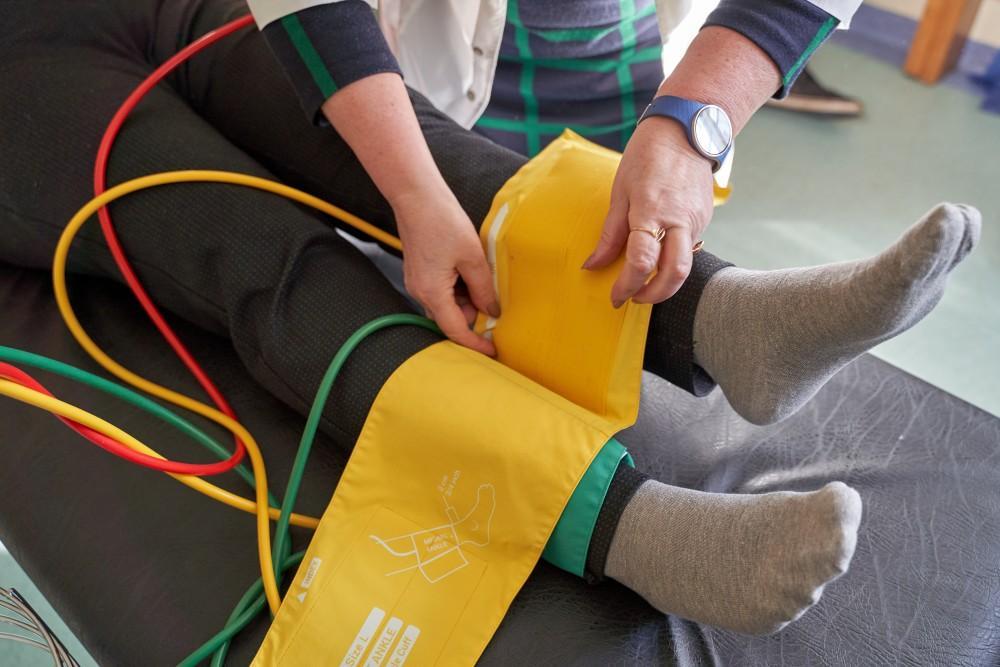Peripheral artery disease (PAD) is a serious health problem that affects millions of Americans. In fact, about one-fifth of Americans over age 50 have PAD, a disease that becomes more common as we get older.
In this post, learn whether PAD can be reversed and what you can do to manage its symptoms and reduce its risks.
Quick facts about peripheral artery disease
Peripheral artery disease happens when the arteries in your legs or, less commonly, your arms become clogged with sticky plaque deposits. Plaques form when cholesterol and other fats in your blood collect along the walls of your arteries. Over time as the plaques get larger, they interfere with circulation, sometimes blocking the arteries, forming clots, or causing heart attacks or strokes.
PAD doesn’t always cause symptoms, which means you can have PAD — and be at risk of a heart attack or stroke — and not even know it. When PAD does cause symptoms, the most common one is leg pain or cramping. Even so, many people who do have leg pain wind up attributing it to aging or other issues, which means important care is delayed.
Other symptoms to look for include:
- Differences in limb temperature
- Weakness or even numbness in an arm or leg
- Slower walking speed
- Pain during exercise or activity using the limb
- Changes in skin color or texture
- Slower toenail or fingernail growth
- Weak pulse in an arm or leg
- Changes in hair growth on an arm or leg
Because it interferes with circulation, PAD can also cause problems with healing, leading to sores that take a long time to heal.
Although anyone can develop PAD, the condition tends to be more common among those who:
- Are over age 50
- Smoke
- Are overweight or obese
- Have high blood pressure or high cholesterol
- Have a family history of heart disease, stroke, or vessel disease
If you have any of these risk factors, it’s a good idea to schedule an evaluation to determine if you’re at risk of developing PAD.
Reversing PAD symptoms
To date, there is no cure for peripheral artery disease, and once you have PAD, you can’t reverse it. However, there are treatments that can help slow the progression of the disease and potentially reverse its symptoms.
Quit smoking
Smoking is a major risk factor for PAD, accounting for as many as half of all cases. Smoking damages blood vessels and increases plaque formation, while also raising your risks of worsening disease and life-threatening complications. If you smoke, it’s imperative that you quit. For tips that can help you quit, call the CDC’s smoking cessation hotline at 1-800-QUIT NOW, or check out the smokefree.gov website.
Exercise more
Regular physical activity improves blood flow to help relieve symptoms and improve your health, too. Frequent exercise reduces your risks of heart attacks, strokes, and other complications, and it can boost your mood, too. Even better, walking is a great exercise for people with PAD, and it takes no special equipment. Aim for 30 minutes a day five or more days per week.
Adopt a healthy eating plan
PAD is associated with elevated cholesterol levels. Committing to a healthy diet that’s low in cholesterol and high in fiber can help. Fill up on fruits, vegetables, and whole grains, and look for plant-based sources of protein. Cut back on salt and sugar, too, since hypertension and elevated glucose can also make PAD worse.
Limit alcohol
Though an occasional glass of wine is probably OK, regular drinking is bad for your heart and bad for your blood vessels, too. Cutting back on alcohol or avoiding it entirely could help relieve symptoms and slow the progression of PAD.
Take your medications
Our team frequently prescribes medicines to help lower cholesterol and manage blood pressure for people with PAD. We may also prescribe medicines to help prevent blood clots, along with medicines to help relieve your symptoms, especially if your symptoms are making it difficult to stay active.
Reduce your PAD risks
If you have PAD or you’re at risk of developing the disease, having a vascular evaluation can help identify disease early or help you manage existing disease to help prevent it from getting worse. Learn how we can help. Call 972-947-2447, or book an appointment online with the team at Prime Heart and Vascular today.





